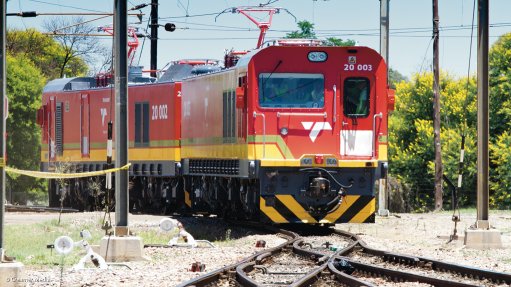IATA forecasts very positive outlook for African airlines over next 12 years
Africa’s air passenger traffic is expected to double, to more than 260-million passengers, by 2035, the International Air Transport Association (IATA) has predicted. It also forecast that in 2035, aviation will, in Africa, support 7.7-million jobs and $63-billion in gross domestic product. (IATA is the global representative body for the airline industry.)
These predictions were highlighted by IATA director-general Willie Walsh in a media briefing on Monday afternoon. The baseline from which this growth is determined was 2019. He noted that 80% of African air passenger traffic was international and only 20% was domestic.
Although the African airline sector is lagging a bit behind the global industry, its post-Covid-19 pandemic recovery is nearly complete. African air passenger traffic in February this year was at 93% of its February 2019 levels. And the continent’s air cargo demand was 31.4% above its 2019 levels.
African commercial aviation is expected to recover to above 2019 levels this year and to complete financial recovery next year. (The global industry is expected to achieve financial recovery this year.) But African airlines remain financially vulnerable, with their total net profit margin for this expected to remain negative, at –1.7% (although that will not be the worst in the world).
However, the recovery is very uneven across the continent. IATA divides the region into four subregions: Central/Western Africa, Eastern Africa, Northern Africa, and Southern Africa. And Southern Africa is lagging behind the other regions, largely owing to South Africa’s economic travails.
For this year, air passenger traffic in Central/Western Africa is forecast to be 101% of its 2019 levels. For Eastern Africa, the figure is predicted to be 102%, for Northern Africa, 103%, but for Southern Africa, only 80%.
Southern Africa is only expected to achieve full recovery in 2025, when the region’s air passenger traffic will reach 103% of its 2019 levels. But the equivalent 2025 figure for Central/Western Africa will be 112%, for Eastern Africa, 122%, and for Northern Africa, 125%. For Africa as a whole, the figure will be 112%.
Overall, the picture for African airlines is, Walsh affirmed, “very positive”.
Comments
Announcements
What's On
Subscribe to improve your user experience...
Option 1 (equivalent of R125 a month):
Receive a weekly copy of Creamer Media's Engineering News & Mining Weekly magazine
(print copy for those in South Africa and e-magazine for those outside of South Africa)
Receive daily email newsletters
Access to full search results
Access archive of magazine back copies
Access to Projects in Progress
Access to ONE Research Report of your choice in PDF format
Option 2 (equivalent of R375 a month):
All benefits from Option 1
PLUS
Access to Creamer Media's Research Channel Africa for ALL Research Reports, in PDF format, on various industrial and mining sectors
including Electricity; Water; Energy Transition; Hydrogen; Roads, Rail and Ports; Coal; Gold; Platinum; Battery Metals; etc.
Already a subscriber?
Forgotten your password?
Receive weekly copy of Creamer Media's Engineering News & Mining Weekly magazine (print copy for those in South Africa and e-magazine for those outside of South Africa)
➕
Recieve daily email newsletters
➕
Access to full search results
➕
Access archive of magazine back copies
➕
Access to Projects in Progress
➕
Access to ONE Research Report of your choice in PDF format
RESEARCH CHANNEL AFRICA
R4500 (equivalent of R375 a month)
SUBSCRIBEAll benefits from Option 1
➕
Access to Creamer Media's Research Channel Africa for ALL Research Reports on various industrial and mining sectors, in PDF format, including on:
Electricity
➕
Water
➕
Energy Transition
➕
Hydrogen
➕
Roads, Rail and Ports
➕
Coal
➕
Gold
➕
Platinum
➕
Battery Metals
➕
etc.
Receive all benefits from Option 1 or Option 2 delivered to numerous people at your company
➕
Multiple User names and Passwords for simultaneous log-ins
➕
Intranet integration access to all in your organisation















